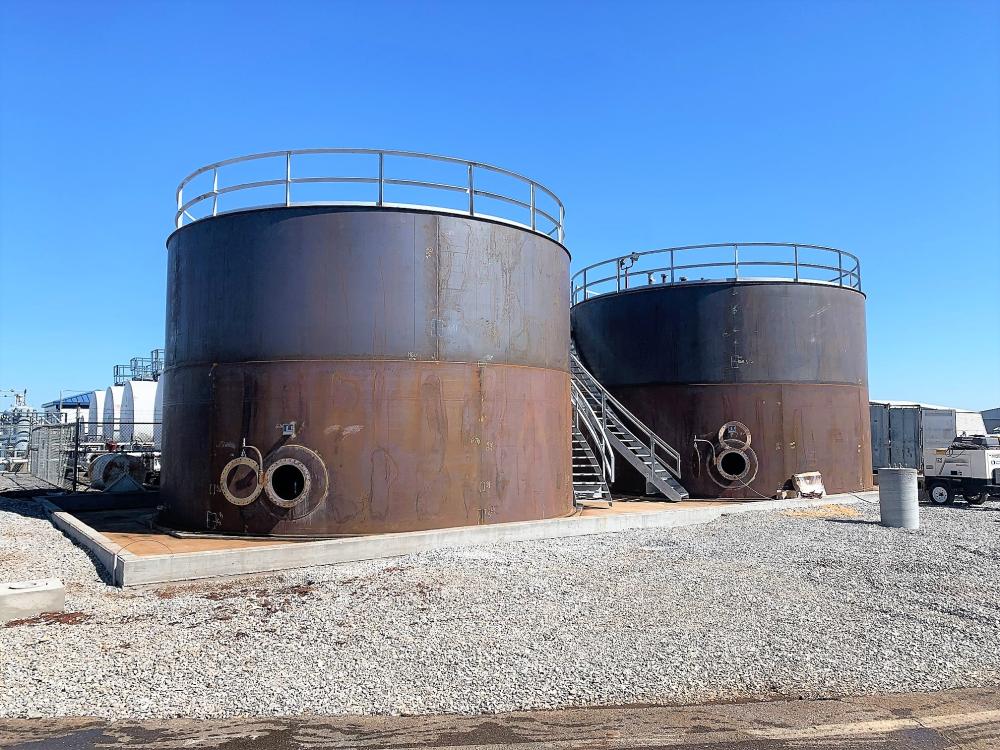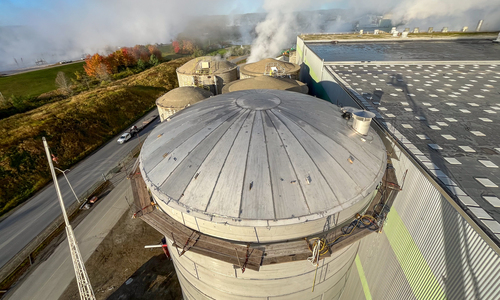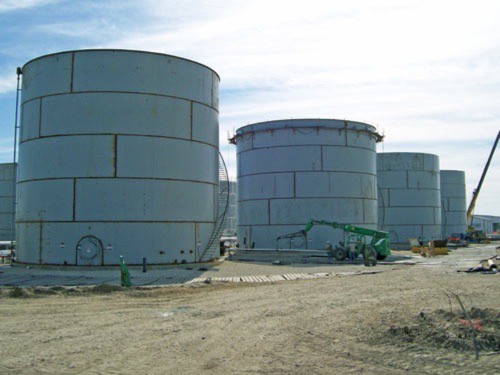Just How Welding Examination Works: A Comprehensive Guide for Professionals
Welding examination plays a vital duty in ensuring the safety and security and reliability of welded structures. It involves an organized strategy that consists of both visual examination and progressed testing techniques. Professionals should familiarize themselves with crucial criteria and guidelines governing the sector. Understanding the typical issues that can occur throughout welding is essential. This guide will certainly discover these aspects thoroughly, giving insights into the procedures that support top quality and honesty in welding.
Comprehending the Relevance of Welding Evaluation
While several might ignore the relevance of welding examination, it plays an important role in making certain the integrity and safety of welded structures. Efficient welding evaluation identifies prospective problems and imperfections that can endanger structural strength and result in disastrous failings. The examination process includes numerous techniques, such as visual evaluations, ultrasonic screening, and radiographic analyses, each adding to the overall examination of weld quality.
Along with safeguarding the architectural honesty, welding assessment guarantees compliance with industry requirements and customer specs. By making certain that welds fulfill needed resistances and characteristics, inspections aid keep the dependability and longevity of parts in various applications, from building and construction to aerospace. In addition, an extensive inspection procedure promotes a culture of quality and responsibility among welders and suppliers. Eventually, welding inspection is not just a step-by-step action; it is a crucial method that underpins the safety and security and efficiency of engineered systems throughout diverse industries.
Trick Standards and Laws in Welding Inspection
The foundation of efficient welding inspection hinges on adherence to developed regulations and requirements. Various companies, such as the American Welding Society (AWS) and the American National Criteria Institute (ANSI), established forth guidelines that assure high quality and safety in welding practices. Secret criteria, such as AWS D1.1 for structural welding and ASME Area IX for pressure vessels, offer comprehensive standards for welding qualifications, evaluations, and procedures. Regulative frameworks, including those from the Occupational Safety And Security and Health Administration (OSHA), mandate safety practices and employee securities in welding settings. Compliance with these standards is crucial for accomplishing regular weld top quality and lessening the threat of failings. Furthermore, international standards like ISO 3834 further enhance international uniformity in welding examination techniques. Experts must stay notified concerning these policies to ensure that their inspection methods align with industry expectations and legal requirements, thereby guarding both personnel and structural honesty.
First Preparation and Visual Inspection Techniques

Reliable welding examination starts with an extensive pre-inspection checklist that assures all required conditions are satisfied prior to the real inspection takes place. Following this preparation, visual flaw identification plays a necessary role in assessing weld quality, enabling assessors to find issues such as splits or inappropriate combination. Together, these techniques create the foundation for an effective welding examination process.
Pre-Inspection Checklist
Before beginning any welding evaluation, a complete pre-inspection list is necessary to assure that all required prep work are finished which aesthetic evaluation strategies are properly utilized. Key elements of this checklist include verifying the welding treatment requirements (WPS), seeing to it all equipment is calibrated and in excellent working problem, and confirming that the examiner possesses the called for accreditations. Furthermore, it is crucial to review any previous examination records and to examine the workplace for safety and security threats. The inspector should likewise confirm that all appropriate paperwork, such as material certificates and inspection documents, is conveniently offered. Completing this list aids to develop a solid foundation for an effective examination procedure, improving the integrity of the outcomes gotten.
Aesthetic Issue Identification
A successful aesthetic issue recognition process starts with cautious initial prep work and the application of recognized visual inspection methods. Examiners ought to guarantee that the welding location is clean and well-lit, as adequate visibility is essential for detecting flaws. A complete examination of the weld joint's surface area enables the recognition of suspensions, such as fractures, undercuts, or porosity. Examiners often utilize devices like magnifying glasses or mirrors to improve their sight of hard-to-reach areas. Furthermore, they should recognize with the specific welding standards and standards pertinent to the job. By sticking to these techniques, assessors can effectively recognize possible issues, securing the honesty of the weld and conformity with industry requirements.
Non-Destructive Testing Methods: A Review
Non-destructive testing (NDT) techniques play a crucial duty in the welding assessment procedure by making certain the integrity and dependability of bonded frameworks without creating any type of damages (API 650 Welding Inspection). These techniques permit assessors to review the quality of welds while maintaining the components being analyzed. Typical NDT techniques include ultrasonic testing, radiographic testing, magnetic particle screening, and look at here color penetrant screening, each offering unique advantages
Ultrasonic screening uses high-frequency acoustic waves to detect internal imperfections, while radiographic testing utilizes X-rays or gamma rays to imagine the internal structure of welds. Magnetic particle screening reveals surface and near-surface problems by applying a magnetic field and iron bits to the weld location. Dye penetrant testing highlights surface-breaking defects via the application of a colored dye. With each other, these NDT approaches give essential insights right into weld quality, enabling professionals to make informed choices relating to security and compliance in welding applications.
Usual Issues and Their Implications
Identifying typical problems in bonded joints is necessary for maintaining architectural honesty and security. Various issues can emerge during the welding process, each lugging possible ramifications for the total performance of the structure. Porosity, defined by small gas pockets within the weld, can damage the joint and endanger its load-bearing ability. Fractures may develop due to thermal stress or inappropriate cooling, bring about prospective failing under anxiety. Incomplete combination occurs when the weld steel does not fully bond with the base product, causing weak joints that may not hold up against designated tons. Undercutting, where the base steel is visit this website deteriorated, can likewise lower the efficient cross-section of the weld. In addition, extreme support can produce stress concentrations that can lead to failing. Identifying these issues promptly permits for corrective procedures, ensuring the longevity and integrity of bonded structures in essential applications.
Tools and Tools Utilized in Welding Examination
Reliable welding examination depends on a variety of specialized devices and tools to guarantee the quality and stability of welded joints. Important tools consist of visual evaluation devices, such as multiplying borescopes and glasses, which permit assessors to closely check out welds for surface flaws. Non-destructive screening (NDT) approaches, such as ultrasonic testing, radiographic screening, and magnetic fragment screening, are basic for determining inner imperfections without harming the product.
Dimension devices, consisting of calipers and weld gauges, help identify and evaluate dimensions compliance with specifications. Additionally, hardness testers assess the mechanical buildings of bonded joints. Individual protective tools (PPE) is additionally imperative, securing the safety and security of inspectors while operating in possibly unsafe settings (API 650 Welding Inspection). Each device offers a particular function, collectively enhancing the performance of welding evaluation and adding to the reliability of completed tasks
Often Asked Questions
What Qualifications Are Required to Come To Be a Welding Assessor?
To end up being a welding inspector, people normally require appropriate certifications, such as AWS CWI or CSWIP, in addition to experience in welding processes, design concepts, and knowledge of examination techniques, safety criteria, and suitable codes.
How Usually Should Welding Inspections Be Performed?
Welding assessments ought to be performed consistently, ideally at numerous project stages, including pre-weld, during-weld, and post-weld. Regularity might likewise depend upon industry criteria, project specs, and the intricacy of the welds included.
Can Welding Defects Be Fixed After Inspection?

Yes, welding defects can commonly be repaired after examination. Relying on the seriousness and type of issue, suitable approaches such as remodeling or extra welding might be used to recover architectural honesty and security compliance.
What Industries Require Normal Welding Assessments?

Different sectors, including building, production, aerospace, and vehicle, require routine welding inspections - API 650 Welding Inspection. These assessments guarantee adherence to security criteria and quality assurance, decreasing risks connected with structural honesty and functional efficiency in bonded parts
How Do I Choose a Welding Assessment Service?
To select a welding examination solution, one ought to consider qualifications, experience, qualifications, and market track record. Furthermore, examining customer testimonials and assuring the service satisfies appropriate standards can assist assure top quality examinations and reputable results.

While several might ignore the significance of welding evaluation, it plays a crucial function in making certain the stability and safety of welded frameworks. Secret standards, such as AWS D1.1 for architectural welding and ASME Section IX for stress vessels, give thorough you could check here requirements for welding examinations, certifications, and treatments. Efficient welding evaluation starts with a complete pre-inspection checklist that assures all necessary conditions are fulfilled before the actual inspection takes area. Prior to beginning any type of welding evaluation, an extensive pre-inspection list is important to guarantee that all necessary prep work are finished and that aesthetic assessment techniques are properly employed. Non-destructive testing (NDT) methods play a crucial role in the welding examination process by making certain the stability and dependability of welded frameworks without causing any damages.